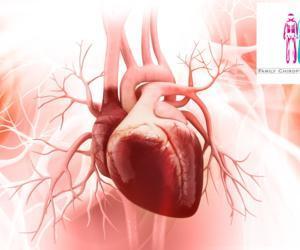How Important Is Magnesium?

What is magnesium?
Magnesium is a mineral that is very important for the normal structure of bones in the human body. In general, people get the necessary amount of this mineral through their diets. However, in certain cases, magnesium supplements are required when the levels of magnesium are lower than normal. This is more common among women and elderly people.
Magnesium plays an important part in a large number of functions in the human body. The most important roles of magnesium are its key roles in protein synthesis and healthy bone formation. Magnesium plays an important role in regulating and maintaining normal blood pressure, along with the health of the heart, and the circulatory system as a whole. This mineral also helps maintain normal levels of other minerals in the human body including zinc, calcium, and potassium. It also produces energy and plays an important role in the regulation of blood sugar. Magnesium is an enzyme cofactor and is crucial to more than 300 enzyme biochemical reactions in the human body.
A normal adult human body usually has about 25 mg of magnesium, more than half of which is located in the bones and soft tissue. About 1% of the total magnesium found in the human body circulates in the blood serum. Normal levels of magnesium in the blood serum are between 0.75 and 0.95 mmol/L. The hemostasis of the magnesium in the human body is controlled by the kidneys, which reduce its excretion when the levels of magnesium in the human body are lower than normal, or increase its excretion when the levels of magnesium in the human body are higher than normal.
Low levels of magnesium in the human body are linked to various diseases such as osteoporosis, diabetes, stroke, high blood pressure, and heart disease. Having low levels of magnesium in the human body is known as hypomagnesemia. Hypomagnesemia occurs when the levels of magnesium in the blood serum are lower than 0.75 mmol/L.
On the other hand, having high levels of magnesium in the human body is known as hypermagnesemia. Hypermagnesemia occurs when the levels of magnesium in the blood serum are higher than 0.95 mmol/L, while magnesium toxicity occurs when the levels of magnesium in the blood serum are above 1.74 – 2.61 mmol/L.
According to the National Institute of Health, the recommended dose of magnesium supplements for children from 1 to 3 years old is 80 mg. Children from 4 to 8 years old need 130 mg a day, while children over the age of 9 years old until 13 years old require 240 mg. For teenagers, 410 mg is recommended for boys, and 360 mg for girls. Men from the age of 19 until 30 years old need about 400 mg of magnesium, while women within the same age range need about 310 mg of magnesium each day. When over the age of 30 years old, men should take about 420 mg of magnesium a day, while women are recommended about 320 mg of magnesium per day. Pregnant women, meanwhile, are advised to take higher daily amounts of magnesium, as their need is increased due to the pregnancy.
What is magnesium citrate?
Magnesium citrate is a preparation with magnesium and citric acid in a 1:1 ratio. It is used as a saline laxative for treating constipation and cleaning the intestines of stool prior to surgery or certain medical procedures involving the gastrointestinal system (e.g. colonoscopy and radiography). The bowel movement usually comes within 30 minutes to 3 hours after magnesium citrate is taken.
Magnesium citrate may cause some side effects, among which are nausea, vomiting, abdominal cramping, and abdominal discomfort from a higher presence of gas. More serious side effects after taking magnesium citrate are possible although less likely to occur. Serious side effects include persistent diarrhea, mood changes, abdominal pain and cramping, blood in the stool, rectal bleeding, muscle weakness, and even an irregular or slower heartbeat.
Many other products milder than magnesium citrate are available on the market today for the treatment of constipation.
What does magnesium do for the body?
Magnesium is a necessary mineral for the proper functioning of the human body, as it plays an important role in over 300 enzyme systems and energy metabolism, and in maintaining the health of the bones and teeth, the proper functioning of the nervous system, and the cardiovascular system.
Magnesium can be found in many kinds of food that should be part of our daily diet.
What kinds of food are rich in magnesium?
In general, foods that are rich in fiber are rich in magnesium as well. Foods rich in magnesium are vegetables, especially leafy green ones, various seeds, and nuts, whole grains, and legumes.
Whole grains, in general, are a great natural source of magnesium. Whole wheat flour contains about 160 mg of magnesium per cup. Try to include whole wheat flour in your daily diet. Instead of buying white bread, buy whole wheat bread, which is healthier and packed with magnesium and other necessary nutrients.
Sesame seeds are rich in magnesium, too, among their many other benefits. One tablespoon of sesame seeds contains about 32 mg of magnesium. Try to include sesame seeds in your daily diet by choosing different recipes that make use of this ingredient--a sesame chicken salad, for example. Sesame seeds are commonly used in Asian cuisine, so eating Chinese, Japanese, or Thai food is a great way to get sesame seeds or sesame oil in the diet.
Tofu is excellent for vegetarians and vegans as a meat substitute, but regardless of whether or not you are a vegetarian, tofu is healthy. One cup of tofu contains about 37 mg of magnesium. If you haven’t tried tofu yet, perhaps thinking of it solely as a meat substitute for non-meat eaters, you ought to give it a try.
Almonds are a healthy snack for many reasons, one of them being that they are packed with magnesium. About 80 mg of this mineral is found in just one ounce of almonds. You can snack on almonds or add toasted almonds to almost any salad you make or dish you cook. Make sure almonds are a part of your daily diet, since by eating just one ounce of almonds, you would be filling about 20 percent of your daily magnesium needs.
Peanuts are another great source of magnesium, just like most nuts. Two tablespoons of peanut butter contain around 50 mg of magnesium.
Cashews, just like the other above–mentioned nuts, are a great source of this very important mineral, magnesium. One ounce of cashews contains about 74 mg of magnesium. You can eat cashews as a snack, alone or combined with other nuts, or you can add it to salads and other dishes.
Spinach is one of many dark leafy greens, which are very healthy and packed with vitamins, minerals, and other healthy nutrients. Just one cup of boiled spinach contains about 157 mg of magnesium. Who doesn’t love spinach? Many recipes have spinach as an ingredient, so eating it often is easy.
Quinoa, a pseudocereal since it is not a grass, is prepared and eaten like rice, but is healthier. One cup of quinoa contains about 120 mg of magnesium. Instead of rice, try quinoa as a substitute, as it is way healthier than rice. Perhaps you will like it better and make it a staple of your diet.
Edamame, which are soy beans still in their pods, are healthy and packed with many great nutrients, not the least of which is magnesium. One cup of cooked edamame has about 50 mg of magnesium. Edamame, steamed or boiled, can be added to many dishes. They can be eaten plain as well.
Black beans, just like all other beans, have many health benefits. Just one-half cup of black beans contains about 60 mg of magnesium. There are plenty of recipes that have black beans on their list of ingredients.
Other foods that contain magnesium are meat, dairy products, fish, poultry, chocolate, and coffee.
When it comes to fish, certain types of fish such as tuna, mackerel, and turbot are high in magnesium.
Is low magnesium bad for your health?
Magnesium deficiency is rare, mostly noticeable among people who have chronic and severe medical conditions such as kidney disease, poorly controlled diabetes, heart disease, alcoholism, and preeclampsia in pregnant women, among others. As many of the signs and symptoms of low magnesium are not specific, its diagnosis is quite difficult sometimes.
As magnesium is an important ingredient of many regulatory and biochemical systems of the human body, low levels of magnesium are bad for the health.
Sub–clinical signs of low magnesium include headaches (usually migraines), general fatigue, and depression. However, classical signs of magnesium deficiency include:
- Calcium deficiency
- Potassium deficiency
- Hyperglycemia
- Muscle cramps
- Weakness,
- Impaired muscle coordination
- Tremors
- Difficulty swallowing
- Involuntary eye movements
- Vertigo
- Muscle spasms
- Hyperactive reflexes
- Tics
- Lethargy
- Irritability
- Anxiety
- Loss of appetite and even anorexia
- Nausea and vomiting
- Impaired memory
- Seizures
- Irregular heartbeat
- Tachycardia
- Coronary spasms
As mentioned, low levels of magnesium are hard to detect in a clinical setting, as the signs and symptoms are not characteristic, or the condition is often asymptomatic. Only at extremely low levels of magnesium in the human body will the signs and symptoms mentioned above be noticed. The signs and symptoms can be caused by many other medical conditions as well, meaning that they need to be ruled out first before a diagnosis of real hypomagnesemia is made. In a diagnosed case of hypomagnasemia, magnesium supplements and magnesium therapy are necessary and begun as soon as possible, and continued for at least one month, and for as long as necessary for a clear improvement in the levels of magnesium in the blood.
The most important thing is to prevent low levels of magnesium in the first place by getting adequate amounts of magnesium every day and leading a healthy and active life.
Is magnesium overdose possible?
In healthy people, too much magnesium won’t do any harm as normally, the kidneys eliminate any excess. However, this is true only for magnesium coming from food. Magnesium supplements or medications, when more is taken than recommended, can lead to nausea, vomiting, abdominal cramping, and diarrhea. Magnesium oxide, magnesium carbonate, magnesium gluconate, and magnesium chloride are the most common types of magnesium that are associated with diarrhea. This diarrheal effect of magnesium results from its osmotic activity of unabsorbed salts in the gastrointestinal system, as well as due to the stimulation of the motility of the gastrointestinal system.
Hypermagnesemia is rare, mostly diagnosed in people who have an impaired kidney function, so that the kidneys don’t function as normal and can’t eliminate the excessive amounts of magnesium from food or, more often, oral magnesium supplements.
If more than 5000 mg of magnesium per day is taken, magnesium toxicity can occur. Signs and symptoms of magnesium toxicity include nausea, vomiting, urine retention, hypotension, facial flushing, depression, ileus, and lethargy. These are followed by more serious signs and symptoms as the condition progresses, such as irregular heartbeat, extreme hypotension, difficulties breathing, muscle weakness, and even cardiac arrest.
The risk of magnesium toxicity is higher among people whose renal function is impaired, as the kidneys are not able to filtrate and eliminate excess amounts of magnesium from the human body.
















